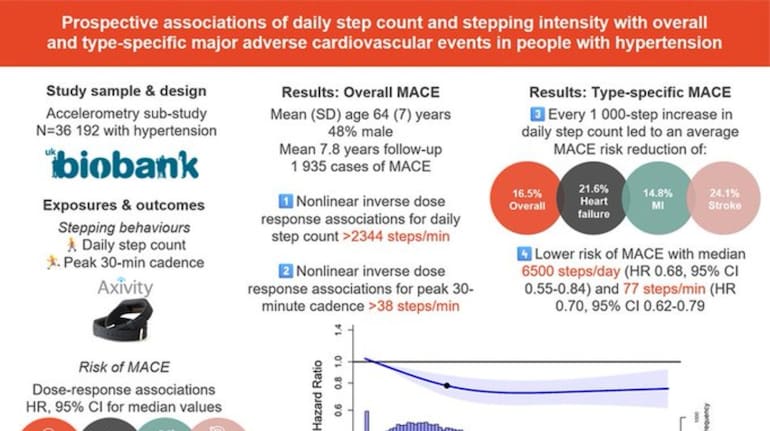



Walking had long been regarded as one of the most straightforward forms of daily exercise, with the 10,000-steps-a-day target widely popularised as a global standard for fitness. Yet medical specialists now said that the quality of walking could be just as decisive as the total number of steps, and that even fewer steps than the benchmark still carried substantial benefits.
Doctors urged people not to feel discouraged if they were unable to reach the 10,000 mark. Instead, they highlighted the importance of steadily raising activity levels and adopting a brisk walking pace, particularly for those managing high blood pressure.
Hyderabad-based neurologist Dr Sudhir Kumar, formerly at Christian Medical College (CMC), Vellore, pointed to large-scale research from the UK Biobank study, noting that health advantages began well before the 10,000 threshold. He explained: “Each additional 1,000 steps per day, up to 10,000, was linked with a significant fall in the risk of heart disease and related disorders.”
According to the data, increments of 1,000 steps were associated with: a 17 percent drop in major cardiovascular events, a 22 percent reduction in heart failure, a 9 percent decrease in heart attacks, and a 24 percent fall in strokes.
Kumar further observed that the way people walked during their most energetic half-hour of the day also made a difference. He noted: “Walking briskly during the most active 30 minutes of the day was found to be protective against heart disease, irrespective of the overall number of steps. This indicates that short bursts of faster-paced walking may provide advantages beyond slower, steady walking.”
Even if your daily step count is below the commonly suggested benchmark of 10,000 steps, every additional 1,000 steps counts, especially for people with high blood pressure.
Walking more and walking faster are linked to significant decreases in heart failure, stroke, heart… pic.twitter.com/7SzBiEqHWN— Dr Sudhir Kumar MD DM (@hyderabaddoctor) August 22, 2025
While 10,000 steps remained a useful reference point, the findings showed that considerably lower step counts still lowered the risk of illness compared to a sedentary lifestyle. Step totals ranging from 2,500 to 4,000 per day were already linked with reduced mortality and fewer complications from cardiovascular conditions.
For individuals with hypertension, even small increases appeared meaningful. The analysis suggested that adding just 1,000 extra steps daily—whether raising the total from 2,300 to 3,300, or from 6,000 to 7,000—produced measurable improvements in heart health.
Doctors stressed that walking represented one of the most accessible and low-cost tools to safeguard cardiovascular health. This advice carried particular weight given that an estimated 1.3 billion adults worldwide lived with high blood pressure.
The recommendation was to start gently, especially for people who were largely inactive. Experts suggested adding 500 to 1,000 steps a day in the beginning and gradually building stamina, while focusing on maintaining a brisk pace. This approach, they said, helped lower risks without placing undue strain on beginners.
Medical experts concluded that while the 10,000-step guideline remained a convenient benchmark, the health benefits of walking began at much lower counts and expanded with each additional step taken. They also stressed that walking faster, even in shorter bursts, offered extra protection for the heart.
Discover the latest Business News, Sensex, and Nifty updates. Obtain Personal Finance insights, tax queries, and expert opinions on Moneycontrol or download the Moneycontrol App to stay updated!
Find the best of Al News in one place, specially curated for you every weekend.
Stay on top of the latest tech trends and biggest startup news.